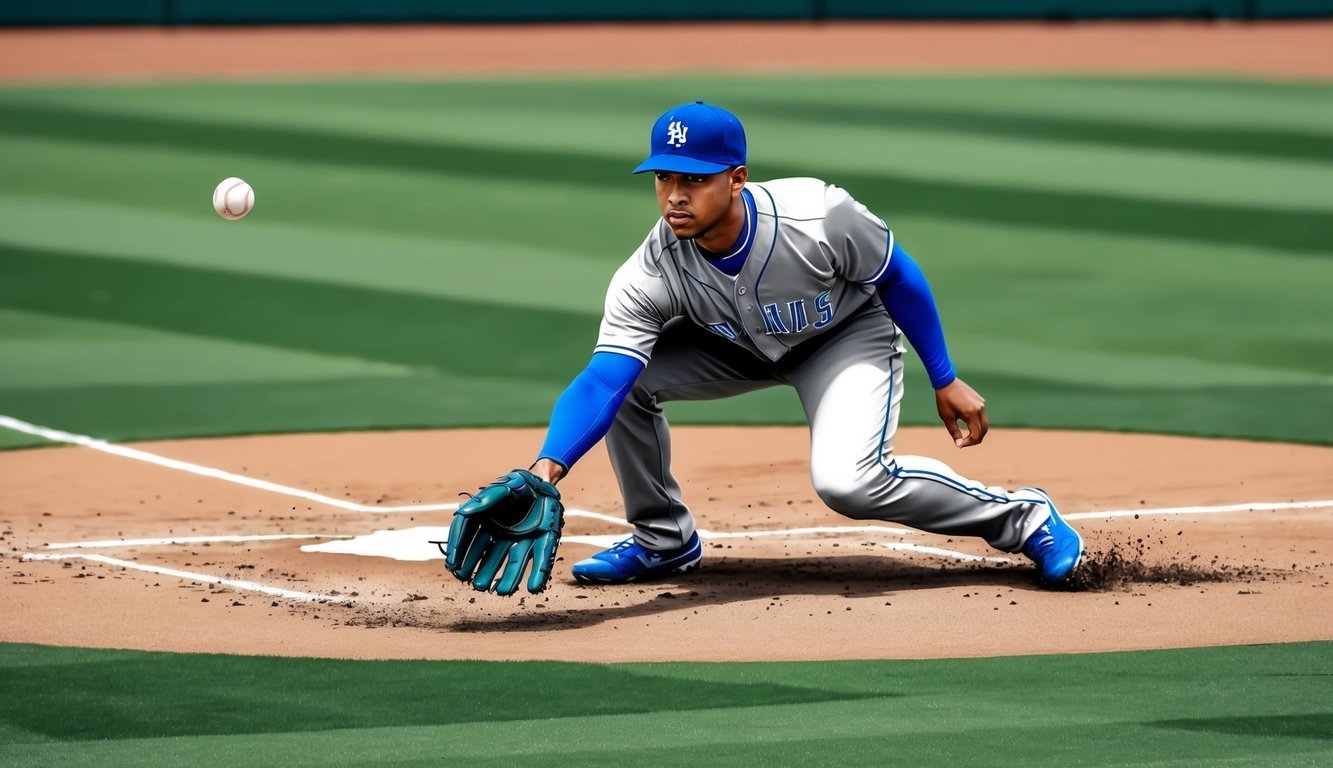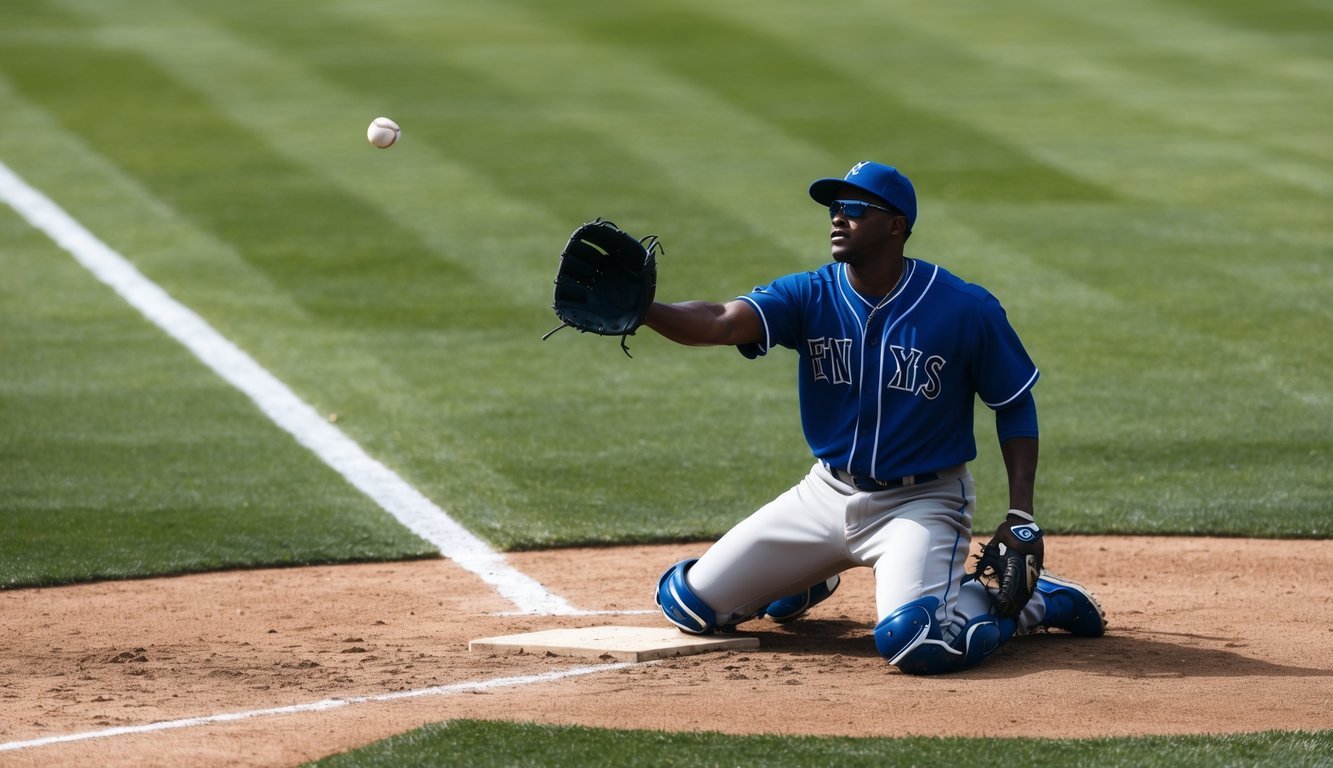Baseball, America’s favorite pastime, is a game of strategy, skill, and athleticism.
Each position on the diamond requires unique abilities and presents its own challenges.
Fans and players often debate which role demands the most from an athlete.
The shortstop is widely considered the hardest position in baseball due to its demanding combination of defensive skills, quick reflexes, and strong throwing arm. This position requires covering the most ground in the infield, making plays on both sides of second base, and executing difficult throws across the diamond.
Shortstops must possess exceptional agility, speed, and hand-eye coordination to field grounders, line drives, and pop-ups effectively.
While shortstop takes the top spot, other positions like catcher and pitcher also present significant challenges.
Catchers must endure physical strain from constant squatting and manage the pitching staff, while pitchers face intense mental pressure and the need for pinpoint accuracy.
Each role contributes uniquely to the team’s success, making baseball a true test of diverse athletic abilities.
Unpacking the Pitcher’s Role
The pitcher stands as a central figure in baseball, combining physical prowess, mental acuity, and strategic thinking.
This position demands a unique blend of skills that can make or break a game.
The Craft of Pitching
Pitching is an art form that requires years of practice and refinement.
Pitchers must master a variety of pitches, each with its own movement and purpose.
The fastball, curveball, slider, and changeup are just a few weapons in a pitcher’s arsenal.
Effective pitchers learn to vary their pitch selection and location to keep batters guessing.
They study hitters’ tendencies and exploit weaknesses.
A deep understanding of game situations helps pitchers make smart choices about when to challenge hitters and when to be more cautious.
Control and accuracy are paramount.
Pitchers aim to hit specific spots within the strike zone, often working the edges to induce weak contact or swings and misses.
Physical Demands on the Mound
Pitching is incredibly taxing on the body, particularly the arm and shoulder.
The repeated throwing motion puts immense stress on these areas, requiring pitchers to maintain excellent physical condition and follow strict training regimens.
Arm strength is crucial, but so is overall body strength and flexibility.
Pitchers need strong legs and core muscles to generate power and maintain consistency in their delivery.
Endurance plays a vital role, as starting pitchers may throw over 100 pitches in a single game.
They must maintain their velocity and command even as fatigue sets in.
Quick reflexes are essential for fielding balls hit back to the mound and covering bases when needed.
Mental Fortitude and Strategy
The mental aspect of pitching can be just as challenging as the physical demands.
Pitchers often find themselves in high-pressure situations where a single mistake can change the outcome of a game.
Concentration and focus are key.
Pitchers must block out distractions and stay locked in on each pitch.
They need to quickly recover from setbacks, such as giving up a home run or walking a batter.
Strategic thinking is crucial.
Pitchers work closely with catchers to develop game plans for facing each batter.
They must also adapt their approach as the game progresses and batters make adjustments.
Reading batters’ body language and anticipating their intentions adds another layer of complexity to the pitcher’s role.
The Critical Role of the Catcher
The catcher is often considered the quarterback of the baseball diamond, requiring a unique blend of physical and mental skills.
This position demands strength, agility, and strategic thinking to excel behind the plate.
Skill Set for the Protector of Home Plate
Catchers need exceptional hand-eye coordination to receive pitches and frame them for strikes.
They must have quick reflexes to block wild pitches and passed balls.
Arm strength is crucial for throwing out base stealers.
Physical endurance is a must, as catchers spend the game squatting.
They wear protective gear to guard against foul tips and collisions at home plate.
Mental sharpness is equally important.
Catchers must memorize opposing batters’ tendencies and work with pitchers to call an effective game.
Catcher’s Impact on the Game
A skilled catcher can significantly influence a team’s success.
They control the game’s pace and defensive strategy, communicating constantly with teammates and coaches.
Catchers guide pitchers through tough situations, helping them stay focused and execute pitches.
Their ability to frame borderline pitches can steal extra strikes.
At the plate, many catchers contribute offensively.
Their batting skills add value, though their defensive prowess often takes precedence.
Catchers face unique challenges, from managing a pitching staff to withstanding the physical toll of the position.
Their leadership on the field is invaluable to a team’s performance.
Exploring the Infield

The infield in baseball presents unique challenges and requires specialized skills for each position.
From lightning-fast reflexes to precise defensive positioning, infielders must excel in various aspects of the game.
Shortstop: The Keystone of Defense
Shortstop is often considered the most demanding infield position.
It requires exceptional range, a strong arm, and quick decision-making skills.
Shortstops must cover a large area of the field, fielding ground balls hit to both their left and right.
They need to make accurate throws from deep in the hole and turn double plays smoothly.
Shortstops also serve as the infield captain, coordinating defensive shifts and communicating with other players.
The position demands superior athleticism, as shortstops must possess speed, agility, and explosive lateral movement to reach balls others can’t.
The Corner Bases: First Base and Third Base
First base and third base each present distinct challenges.
First basemen need soft hands to scoop throws in the dirt and stretch for close plays.
They’re often involved in putouts and must be adept at fielding bunts down the line.
Third base, nicknamed the “hot corner,” requires quick reflexes to field hard-hit balls.
Third basemen need a strong, accurate arm to make long throws across the diamond.
They also play a crucial role in defending against bunts and must be ready to charge in at a moment’s notice.
Both positions demand good footwork around the bag and the ability to react to line drives.
Second Base: Quickness and Coordination
Second basemen need exceptional quickness and hand-eye coordination.
They’re vital in turning double plays, often making the pivot while avoiding sliding runners.
Second basemen must have a good read on stolen base attempts and cover first on bunts to the right side.
The position requires a combination of range and sure-handedness.
Second basemen frequently field balls up the middle and in the hole between first and second.
They also serve as a cutoff man for throws from the outfield.
Defensively, second basemen need to master quick transfers and accurate throws from various angles.
Surveying the Outfield

The outfield in baseball is a crucial area that demands a unique set of skills and responsibilities.
Players in this position face distinctive challenges and must possess a combination of physical prowess and mental acuity.
Outfield Positions and Responsibilities
The outfield consists of three positions: left field, center field, and right field.
Each position has specific duties, but all share the primary task of catching fly balls and preventing hits from becoming extra-base opportunities.
Center fielders often cover the most ground, acting as the captain of the outfield.
They need exceptional speed and judgment to track down balls hit to the gaps.
Left and right fielders guard the foul lines and must be adept at fielding balls off the wall.
Right fielders typically have stronger throwing arms to make long throws to third base.
Essential Skills for an Outfielder
Outfielders need a diverse skill set to excel in their role.
Quick reflexes and good judgment are crucial for reading the ball off the bat and taking efficient routes.
A strong arm with accuracy is vital for throwing out runners or hitting cutoff men.
Outfielders must also possess:
- Speed to cover large areas of the field
- Jumping ability to rob home runs
- Hand-eye coordination for making difficult catches
- Mental toughness to stay focused during long periods of inactivity
Athleticism is key, as outfielders often sprint long distances and make diving catches.
The Importance of Communication
Effective communication is paramount in the outfield.
Outfielders must constantly talk to each other to avoid collisions and determine who will catch fly balls in shared territories.
They also need to communicate with infielders on cutoffs and relays.
Clear, loud calls like “I got it!” or “Take it!” help prevent confusion and potential errors.
Outfielders should also be aware of the game situation, including the number of outs, the score, and the strengths of opposing batters.
This information helps them position themselves optimally and make smart decisions.
Good communication extends to relaying information about wind conditions and any quirks of the outfield, such as uneven ground or tricky wall angles.
Conclusion: Embracing the Challenge

Baseball demands excellence from players in every position.
Each role presents its own unique set of difficulties and rewards.
The catcher stands out as the most challenging position.
It requires physical strength, mental acuity, and strategic thinking.
They must handle pitches, direct the defense, and thwart base stealers.
Additionally, the best catchers in baseball history have demonstrated an exceptional ability to read the game, anticipating the actions of both batters and base runners.
Their leadership on the field is crucial, as they serve as a conduit between the pitcher and the rest of the team.
This unique combination of skills not only shapes the outcome of individual games but also influences the dynamics of entire seasons.
Pitchers face intense pressure on the mound, needing pinpoint accuracy and mental fortitude.
Shortstops combine agility with quick reflexes to cover a vast area of the infield.
Center fielders blend speed with precise judgment to track down fly balls.
Third basemen require lightning-fast reactions and a strong throwing arm to defend against bunts and line drives.
Success in any baseball position demands dedication, focus, and continuous improvement.
Players must embrace their role’s specific challenges and work tirelessly to hone their skills.
Aspiring athletes should appreciate the difficulty of each position.
By understanding the unique demands of different roles, players can better prepare themselves for success on the diamond.
Ultimately, the hardest position in baseball is the one each player commits to mastering.
Embracing the challenge leads to growth, teamwork, and the thrill of excelling in America’s pastime.
